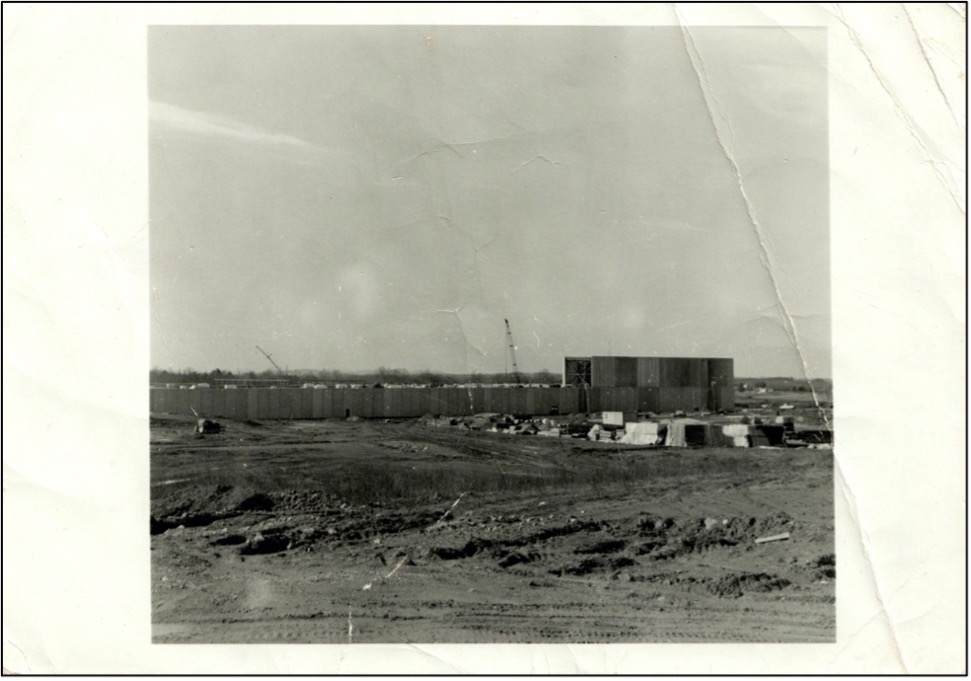Laying a New Foundation: Data Center jobs and tax revenue will provide a solid footing for Appomattox to retool and regain relevance in the 21st century.
The industrial park in Appomattox was set aside for industrial use decades ago. Historically, our community has seen notable employers come and go—the Southern Battery Co. in the 1930s, the Appomattox Garment Co. from the 1950s through the 1970s, and Thomasville from the 1970s into the 2000s. These companies offered tangible economic benefits, providing jobs, income, and a stable tax base.
However, the global economy has shifted, and the days of a major manufacturing plant setting up shop in a rural locality without an interstate highway are increasingly rare. "For example, a 150-acre site that has limited road and rail infrastructure but is located close to 230kV transmission lines might be best used as a data center instead of a manufacturing plant. To help localities in distressed areas compete for data centers, VEDP should clarify that potential data center sites can be included in VEDP's site listings and are eligible for Virginia Business Ready Sites Program grants."
Why Data Centers?
The question that often arises now is: Why data centers? The answer is straightforward—data centers represent the modern backbone of global commerce and communication. Companies like Facebook and Microsoft rely on these facilities to store, process, and deliver the digital content that most of us use every day. In other words, data centers are the 21st-century equivalent of a factory, except instead of producing physical goods, they produce and manage information at tremendous scale.
Jobs and Economic Impact
As for employment, the notion that a large data center would somehow create fewer than ten jobs is simply incorrect. Typical staffing scales at roughly one full-time equivalent (FTE) per megawatt of capacity. A substantial data center can employ hundreds of individuals in a range of roles—technicians, facility managers, security personnel, and more. The construction phase alone involves over a thousand skilled tradespeople: excavation crews, electricians, plumbers, paving specialists, low-voltage installers, and fencing contractors. These are real, tangible jobs that pay local workers and support local businesses.
Beyond employment, the tax benefits are significant. With billions in equipment and real estate investment, the data center will generate nearly $20 million annually in local revenue. These funds return directly to the community—improving infrastructure, bolstering schools, establishing reserve funds, and potentially easing the tax burden on residents. The project would also immediately return $5 million to the County Economic Development Authority through the land sale and then place 450 acres back on the tax rolls, ensuring a steady financial contribution long into the future.
Land Use Considerations
Some critics raise concerns about land use, but it's important to remember that this is not farmland or residential property being converted; it is an industrial park designated for precisely this kind of development. For two decades, this property has stood ready for industrial tenants, and concerns arising only now suggest a reluctance to embrace the future rather than any genuine zoning issue.
Solar Power Reality
Equally, fears about solar panels are misplaced. While certain solar projects in rural areas have raised questions about environmental impact, the scenario here is entirely different. In an industrial setting, any solar installation is minor and integrated into a built environment that already accounts for stormwater runoff, wildlife impact, and long-term remediation. A few rooftop panels or a small lot installation do not equate to the sprawling solar farms that have rightly drawn scrutiny elsewhere.
It's not that solar power is some utopian tech that's never going to happen—it's just that datacenters are basically insatiable electricity monsters, and they don't care about the sun's schedule. A datacenter wants a stable, continuous current, 24/7, no downtime, period. But solar output peaks for 4-6 hours max in central Virginia—beyond that, your generation curve falls off a cliff. You end up with this big, daily energy sine wave that's basically useless to a load profile that's just a flat line at "always on" and "always more."
Infrastructure Challenges
Addressing utilities such as water and power is a broader issue that the county must face regardless. Past reluctance to invest in a reservoir or water treatment infrastructure should not dictate present decisions. Modern development—be it a data center or any large enterprise—requires consistent utilities. Negotiations with local authorities, state permits, and utility companies are already underway, and data center projects can accelerate much-needed infrastructure upgrades that benefit everyone.
Conclusion
Ultimately, the question comes down to what kind of economic future Appomattox wants to build. Nostalgia for mid-20th-century manufacturers cannot override the realities of the modern economy. Data centers offer long-term stability, jobs, and substantial revenue, with comparatively modest demands on land already designated for industrial use. If not data centers, what then? Without embracing contemporary opportunities, the county risks stagnation and continued reliance on an outdated vision of economic development that may never return.
In short, this project aligns with the intended purpose of the industrial park, delivers meaningful employment and revenue, and positions Appomattox to participate in the digital economy that underpins so much of today's world. The choice is between seizing this opportunity or clinging to an economic model that no longer fits our reality.


